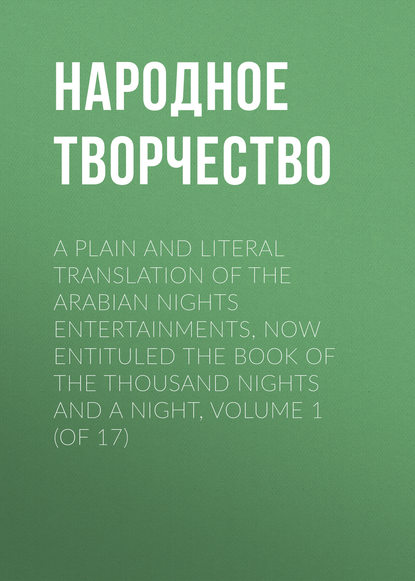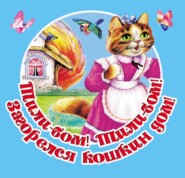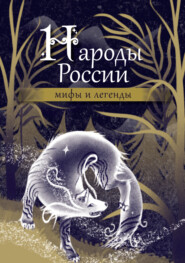По всем вопросам обращайтесь на: info@litportal.ru
(©) 2003-2024.
✖
A plain and literal translation of the Arabian nights entertainments, now entituled The Book of the Thousand Nights and a Night, Volume 1 (of 17)
Настройки чтения
Размер шрифта
Высота строк
Поля
287
Arab. "Sadr"; the place of honour; hence the "Sudder Adawlut" (Supreme Court) in the Anglo-Indian jargon.
288
Arab. "Ahlan wa sahlan wa marhabá," the words still popularly addressed to a guest.
289
This may mean "liquid black eyes"; but also, as I have noticed, that the lashes were long and thick enough to make the eyelids appear as if Kohl-powder had been applied to the inner rims.
290
A slight parting between the two front incisors, the upper only, is considered a beauty by Arabs; why it is hard to say except for the racial love of variety. "Sughr" (Thugr) in the text means, primarily, the opening of the mouth, the gape: hence the front teeth.
291
i. e. makes me taste the bitterness of death, "bursting the gall-bladder" (Marárah) being our "breaking the heart."
292
Almost needless to say that forbidden doors and rooms form a lieu commun in Fairie: they are found in the Hindu Katha Sarit Sagara and became familiar to our childhood by "Bluebeard."
293
Lit. "apply Kohl to my eyes," even as Jezebel "painted her face," in Heb. put her eyes in painting (2 Kings ix., 30).
294
Arab. "Al-Barkúk," whence our older "Apricock." Classically it is "Burkúk" and Pers. for Arab. "Mishmish," and it also denotes a small plum or damson. In Syria the "side next the sun" shows a glowing red flush.
295
Arab. "Hazáṙ" (in Persian, a thousand)=a kind of mocking bird.
296
Some Edit. make the doors number a hundred, but the Princesses were forty and these coincidences, which seem to have significance and have none save for Arab symmetromania, are common in Arab stories.
297
Arab. "Májúr": hence possibly our "mazer," which is popularly derived from Masarn, a maple.
298
A compound scent of ambergris, musk and aloes.
299
The ends of the bridle-reins forming the whip
300
The flying horse is Pegasus which is a Greek travesty of an Egyptian myth developed in India.
301
The Bres. Edit. wrongly says "the seventh."
302
Arab. "Sharmutah" (plur. Sharámít) from the root Sharmat, to shred, a favourite Egyptian word also applied in vulgar speech to a strumpet, a punk, a piece. It is also the popular term for strips of jerked or boucaned meat hung up in the sun to dry, and classically called "Kadíd."
303
Arab. "Izár," the man's waist-cloth opposed to the Ridá or shoulder-cloth, is also the sheet of white calico worn by the poorer Egyptian women out of doors and covering head and hands. See Lane (M. E., chapt. i). The rich prefer a "Habárah" of black silk, and the poor, when they have nothing else, use a bed-sheet.
304
i. e. "My dears."
305
Arab. "Lá tawákhizná:" lit. "do not chastise (or blame) us;" the pop. expression for, "excuse (or pardon) us."
306
Arab. "Maskhút," mostly applied to change of shape as man enchanted to monkey, and in vulgar parlance applied to a statue (of stone, etc.). The list of metamorphoses in Al-Islam is longer than that known to Ovid. Those who have seen Petra, the Greek town of the Haurán and the Roman ruins in Northern Africa will readily detect the basis upon which these stories are built. I shall return to this subject in The City of Iram (Night cclxxvi.) and The City of Brass (dlxvii.).
307
A picturesque phrase enough to express a deserted site, a spectacle familiar to the Nomades and always abounding in pathos to the citizens.
308
The olden "Harem" (or gynæceum, Pers. Zenanah, Serraglio): Harím is also used by synecdoche for the inmates; especially the wife.
309
The pearl is supposed in the East to lose 1 % per ann. of its splendour and value.
310
Arab. "Fass," properly the bezel of a ring; also a gem cut en cabochon and generally the contenant for the contenu.
311
Arab. "Mihráb"=the arch-headed niche in the Mosque-wall facing Meccah-wards. Here, with his back to the people and fronting the Ka'abah or Square House of Meccah (hence called the "Kiblah"=direction of prayer), stations himself the Imám, antistes or fugleman, lit. "one who stands before others;" and his bows and prostrations give the time to the congregation. I have derived the Mihrab from the niche in which the Egyptian God was shrined: the Jews ignored it, but the Christians preserved it for their statues and altars. Maundrell suggests that the empty niche denotes an invisible God. As the niche (symbol of Venus) and the minaret (symbol of Priapus) date only from the days of the tenth Caliph, Al-Walid (A.H. 86-96=105-115), the Hindus charge the Moslems with having borrowed the two from their favourite idols – The Linga-Yoni or Cunnus-phallus (Pilgrimage ii. 140), and plainly call the Mihrab a Bhaga=Cunnus (Dabistan ii. 152.) The Guebres further term Meccah "Mah-gah," locus Lunæ, and Al-Medinah, "Mahdinah,"=Moon of religion. See Dabistan i., 49, etc.
Arab. "Sadr"; the place of honour; hence the "Sudder Adawlut" (Supreme Court) in the Anglo-Indian jargon.
288
Arab. "Ahlan wa sahlan wa marhabá," the words still popularly addressed to a guest.
289
This may mean "liquid black eyes"; but also, as I have noticed, that the lashes were long and thick enough to make the eyelids appear as if Kohl-powder had been applied to the inner rims.
290
A slight parting between the two front incisors, the upper only, is considered a beauty by Arabs; why it is hard to say except for the racial love of variety. "Sughr" (Thugr) in the text means, primarily, the opening of the mouth, the gape: hence the front teeth.
291
i. e. makes me taste the bitterness of death, "bursting the gall-bladder" (Marárah) being our "breaking the heart."
292
Almost needless to say that forbidden doors and rooms form a lieu commun in Fairie: they are found in the Hindu Katha Sarit Sagara and became familiar to our childhood by "Bluebeard."
293
Lit. "apply Kohl to my eyes," even as Jezebel "painted her face," in Heb. put her eyes in painting (2 Kings ix., 30).
294
Arab. "Al-Barkúk," whence our older "Apricock." Classically it is "Burkúk" and Pers. for Arab. "Mishmish," and it also denotes a small plum or damson. In Syria the "side next the sun" shows a glowing red flush.
295
Arab. "Hazáṙ" (in Persian, a thousand)=a kind of mocking bird.
296
Some Edit. make the doors number a hundred, but the Princesses were forty and these coincidences, which seem to have significance and have none save for Arab symmetromania, are common in Arab stories.
297
Arab. "Májúr": hence possibly our "mazer," which is popularly derived from Masarn, a maple.
298
A compound scent of ambergris, musk and aloes.
299
The ends of the bridle-reins forming the whip
300
The flying horse is Pegasus which is a Greek travesty of an Egyptian myth developed in India.
301
The Bres. Edit. wrongly says "the seventh."
302
Arab. "Sharmutah" (plur. Sharámít) from the root Sharmat, to shred, a favourite Egyptian word also applied in vulgar speech to a strumpet, a punk, a piece. It is also the popular term for strips of jerked or boucaned meat hung up in the sun to dry, and classically called "Kadíd."
303
Arab. "Izár," the man's waist-cloth opposed to the Ridá or shoulder-cloth, is also the sheet of white calico worn by the poorer Egyptian women out of doors and covering head and hands. See Lane (M. E., chapt. i). The rich prefer a "Habárah" of black silk, and the poor, when they have nothing else, use a bed-sheet.
304
i. e. "My dears."
305
Arab. "Lá tawákhizná:" lit. "do not chastise (or blame) us;" the pop. expression for, "excuse (or pardon) us."
306
Arab. "Maskhút," mostly applied to change of shape as man enchanted to monkey, and in vulgar parlance applied to a statue (of stone, etc.). The list of metamorphoses in Al-Islam is longer than that known to Ovid. Those who have seen Petra, the Greek town of the Haurán and the Roman ruins in Northern Africa will readily detect the basis upon which these stories are built. I shall return to this subject in The City of Iram (Night cclxxvi.) and The City of Brass (dlxvii.).
307
A picturesque phrase enough to express a deserted site, a spectacle familiar to the Nomades and always abounding in pathos to the citizens.
308
The olden "Harem" (or gynæceum, Pers. Zenanah, Serraglio): Harím is also used by synecdoche for the inmates; especially the wife.
309
The pearl is supposed in the East to lose 1 % per ann. of its splendour and value.
310
Arab. "Fass," properly the bezel of a ring; also a gem cut en cabochon and generally the contenant for the contenu.
311
Arab. "Mihráb"=the arch-headed niche in the Mosque-wall facing Meccah-wards. Here, with his back to the people and fronting the Ka'abah or Square House of Meccah (hence called the "Kiblah"=direction of prayer), stations himself the Imám, antistes or fugleman, lit. "one who stands before others;" and his bows and prostrations give the time to the congregation. I have derived the Mihrab from the niche in which the Egyptian God was shrined: the Jews ignored it, but the Christians preserved it for their statues and altars. Maundrell suggests that the empty niche denotes an invisible God. As the niche (symbol of Venus) and the minaret (symbol of Priapus) date only from the days of the tenth Caliph, Al-Walid (A.H. 86-96=105-115), the Hindus charge the Moslems with having borrowed the two from their favourite idols – The Linga-Yoni or Cunnus-phallus (Pilgrimage ii. 140), and plainly call the Mihrab a Bhaga=Cunnus (Dabistan ii. 152.) The Guebres further term Meccah "Mah-gah," locus Lunæ, and Al-Medinah, "Mahdinah,"=Moon of religion. See Dabistan i., 49, etc.

















